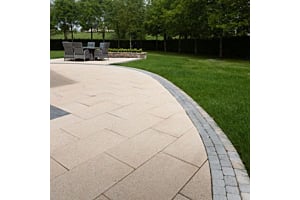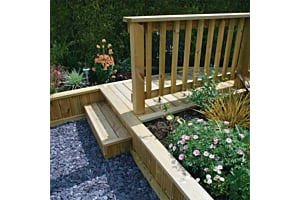Harsh Weather Conditions
Whilst we may become conditioned to our surroundings, the same cannot be said for our outdoor fencing.
Harsh weather conditions can have a significant impact on your wooden fence. And although most are designed to withstand the elements, rain can sometimes take its toll. With that being said, there a couple of things you can do to preserve your fence boards – we’ll go through these later on.
‘Moisture Does Damage’
It may surprise you, but initial heavy rainfall is not what’s causing damage to our fences. What causes significant harm is when rainwater is allowed to sit or cannot dry-out for a prolonged period. This, after some time, leads to mold, mildew and rotting.
Wooden fences are particularly susceptible to water damage. Soft-to-touch wood, small holes or cracks can all be signs of deterioration and an indication that your fence boards need replaced.
As the temperature drops during winter months some fences can also become brittle and less flexible. Combined with the added moisture during this time, our fences become much more likely to break. The same goes for the summer when materials can expand in the hot weather. And if your fencing is not flexible enough to allow for expansion, it can lead to cracked or warped boards.
Another way that your fence can become damaged is actually via your pathway or the area in which its foundation is set. Water can sometimes gather in these areas and drain directly into the fence base. With moisturise targeting just one area, this can cause lead to substantial loss in your fence’s strength and durability.
Maintaining Your Fence...
Choose Pressure Treated
Despite being susceptible to moisture damage, wood is still the number one choice for outdoor fencing. With this being said there are a number of ways you can ensure it stays strong for as long as possible. Pressure treatment works by placing timber into a vaccum where preservatives are applied before it’s subjected to high pressure.
For wooden fences, it’s an effective treatment against fungal decay and burrowing insects.
Install Gravel Boards
Fencing in NI or the UK means facing significant amounts of rain. In these cases the ground can be left damp for prolonged periods of time. A gathering of water or wet soil can lead to your wood rotting at its base, and this is where gravel boards come in.
Gravel boards can be used to protect your fence panels that may be in contact with the wet ground. Constructed from a specific class of timber and put through a treatment process they can prolong fence life for up to 20 years. Not to mention, protecting your boards from strong winds and heavy rain.
Protect with Post Caps
When exposed to damp conditions, wooden posts and end grain are often the most vulnerable parts of your fence. This is because the tops of the post will absorb most of the moisture, eventually leading to rotting. By installing a post cap you can add an extra layer of protection to your fencing.
Not only will this stop moisture from penetrating the fence boards but it will also improve your overall aesthetic.
Add Rails to your Fencing
Rails are commonly used during the construction of fences. They run horizontally along the back of the fence to provide crucial support. Arris rails are known for having a triangular shaped cross section, they also have ‘tongues’ cut at each end to fit into slots in each post. These take the full weight of the fence and add much needed stability.
Another option is Cant rails, these work well with featherboard systems as they slot in just in front of the posts. This type of rail generally proves stronger as they don’t have narrow parts.




